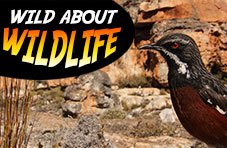Is it a bird, is it a plane, is it the Superman? When in South Africa, there’s no question what you’ll see when you look up into the sky. Cuckoos, owls, woodhoopoes, hornbills, kingfishers, barbets, falcons, parrots, cormorants, eagles… You name it, there’s a good chance we’ve got it. About as many as 850 bird species have been recorded in this country, out of which over 700 are residents and about 50 can only be found in South Africa.
Knowing this, it’s no wonder bird-watching enthusiasts flock in masses to our part of the world, taking advantage of an established avi-tourism industry.
The Richness of Colours of Sounds
Thanks to its subtropical climate, freshwater lagoons, forests, flooded grasslands and tidal estuaries, KwaZulu-Natal is home to a number of exciting species. If you hear a kow-kow-kow call, know this is Knysna Turaco easily recognisable by its orange-red bill, green feathers and tall green crest tipped with white. Although a bird of prey, black and white Palm-Nut Vulture with a red patch around the eye, feeds primarily on fruit of the oil palm. Neergaard's Sunbird is a beautiful small thing with an interesting colouring; it’s head and back are metallic green, wings black, breast scarlet, and tail brownish-black. If you hear something resembling an old car horn, you might be in the presence of the African broadbill, though due to its coloring and its inconspicuous behavior, it won’t be easy to see. Southern Banded Snake Eagle is a relatively small, stocky eagle which, as the name would suggest, mainly eats snakes.
Unique Bird-watching Experience
The Western Cape is another great bird-watching spot, home to endemic birds such as the Orange-breasted Sunbird, Protea Seedeater, Cape Rockjumper, Cape Siskin, Cape Sugarbird, Kynsna Warbler, and Hottentot Buttonquail. Feeding on flower nectar, the male Orange-breasted Sunbird looks like a flying rainbow. Only its bill, legs and feet are black, while the rest of its body shines in bright metallic green (the head), olive green (upper part of the body), metallic violet and orange (breast), and yellow (belly). Cape Rockjumper has very small wings and will not fly very often, but instead spend most of the time running and jumping among rocks hunting for insects. The male Cape Sugarbirds feature unusually long tails, and when they fly, the guys attract females by a frrt-frrt sound made by their feathers.
Birds of Prey vs Urban Inhabitants
Many of raptor species have made Mpumalanga their home, including the Martial Eagle, Brown Snake Eagle, African Hawk Eagle, Tawny Eagle, Walhberg's Eagle, the Steppe Eagle and Lesser Spotted Eagle. Large Martial Eagle can grow as much as 1m in length, and has very keen eyesight which allows it to spot potential dinner from a great distance. Its slightly smaller relative, African Hawk Eagle, builds impressive nests of almost 1 meter in diameter on large trees, while the Steppe Eagle stores the food for hours in a crop in its throat before moving to the stomach.
There are about 350 bird species to be seen in the surrounding area of Johannesburg and Pretoria, many of which can be found even in residential areas. You might see Speckled Pigeon build a stick nest on top of pergola pillars or under eaves of flat roofs. Grey Loerie is also known as the grey go-away-bird, because when you disturb it, the bird will let you know it’s there by making a loud and nasal "kweh" or go-way call ending with a descending drawl. Black-collared Barbet with a large red head is known for singing in duets, while Hadeda Ibis, which looks like it’s sporting a moustache, produces a haa-haa-haa-de-dah call which gave it its name.
One particular bird we’ll get to know better is the Southern Bald Ibis. If you want to learn more about this vulnerable species, check out the article dedicated exclusive to the unique-looking gobbler.




